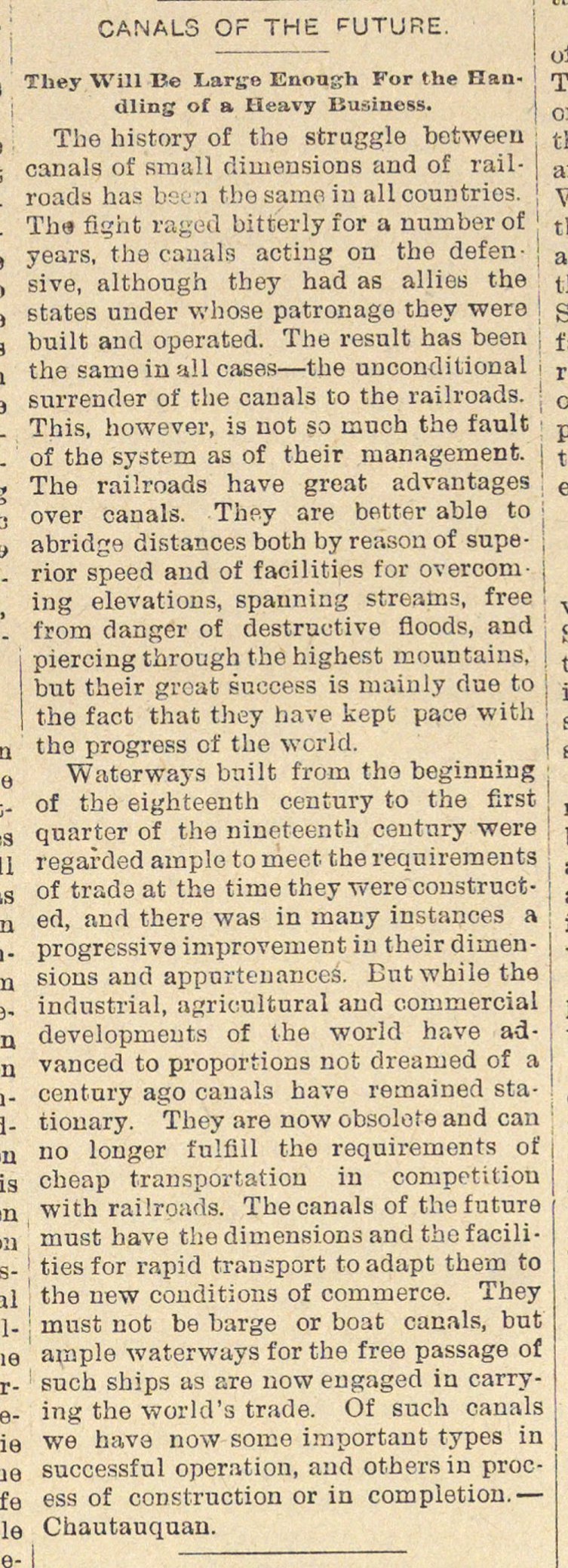Canals Of The Future

The history of the struggle betwem canals of small dimensions and of railroads has b;.v:i tbosamoiu allcountrios. Tha flht raged bitterly for a number of years, the cauals acting on the ; sive, although they had as allies the states under whose patronage they were ] built and operated. The resnlt has been the same in all cases - the uncondiüonal surrender of the caaals to the railroads. This, however, is uot so tauch the fault of the system as of their management, j The railroads have great advantages I over canals. Thsy are better able to j abridge distances both by reason of superior speed and of facilities for ing elevations, spanning streatns, free ! from dangér of destructivo floods, and ! piercingthrough the highest mountains, i but their great áuccess is mainly due to the fact that they have kept pace with the progress of the wcrld. Waterways built from tho beginning of the eighteenth century to the first quarter of the nineteenth ceutnry were regarded ampie to meet the requirements of tradeat the time they were ed, and there was in many mstances a progressive improvement in I sions and apportenanceá. Bntwhíle the industrial, agricultnral and commercial developments of the world have i vaneed to proportions not drearued of a J centnry ago canals have remained ' tionary. Thèy are now obsolete and can no longer fulfill the requiremonts of chenp t.ransportation in compotitiou with raüroads. The canals of the future must have thedimensionsand thofacilities for rapid transport to adapt thera to the uew conditions of commerce. They must not be barge or boat canals, but ampie waterwuys for the free passage of suck ships as are now engaged in carrying the world's trade. Of such canals we have now some important types in successful operation, and otbers in process of construction or in completion. -
Article
Subjects
Ann Arbor Argus
Old News